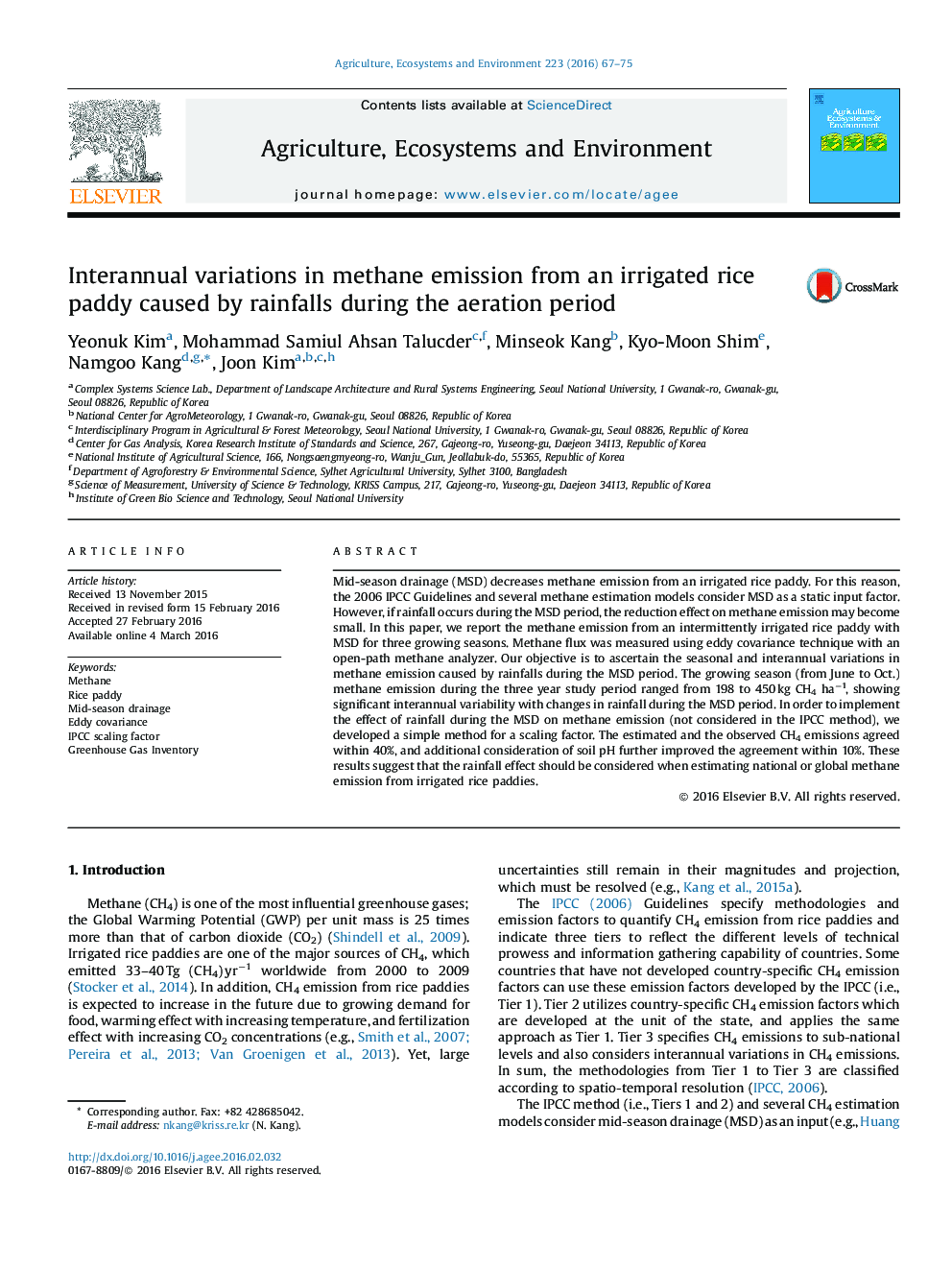| Article ID | Journal | Published Year | Pages | File Type |
|---|---|---|---|---|
| 2413485 | Agriculture, Ecosystems & Environment | 2016 | 9 Pages |
•Methane flux was observed for 3 years in a rice field by eddy covariance system.•Rainfalls during aeration period triggered methane emissions to multiply.•The 2006 IPCC method has not considered the effect of rain during the aeration period.•A simple method to reflect the rain effect on methane emissions is proposed.
Mid-season drainage (MSD) decreases methane emission from an irrigated rice paddy. For this reason, the 2006 IPCC Guidelines and several methane estimation models consider MSD as a static input factor. However, if rainfall occurs during the MSD period, the reduction effect on methane emission may become small. In this paper, we report the methane emission from an intermittently irrigated rice paddy with MSD for three growing seasons. Methane flux was measured using eddy covariance technique with an open-path methane analyzer. Our objective is to ascertain the seasonal and interannual variations in methane emission caused by rainfalls during the MSD period. The growing season (from June to Oct.) methane emission during the three year study period ranged from 198 to 450 kg CH4 ha−1, showing significant interannual variability with changes in rainfall during the MSD period. In order to implement the effect of rainfall during the MSD on methane emission (not considered in the IPCC method), we developed a simple method for a scaling factor. The estimated and the observed CH4 emissions agreed within 40%, and additional consideration of soil pH further improved the agreement within 10%. These results suggest that the rainfall effect should be considered when estimating national or global methane emission from irrigated rice paddies.
